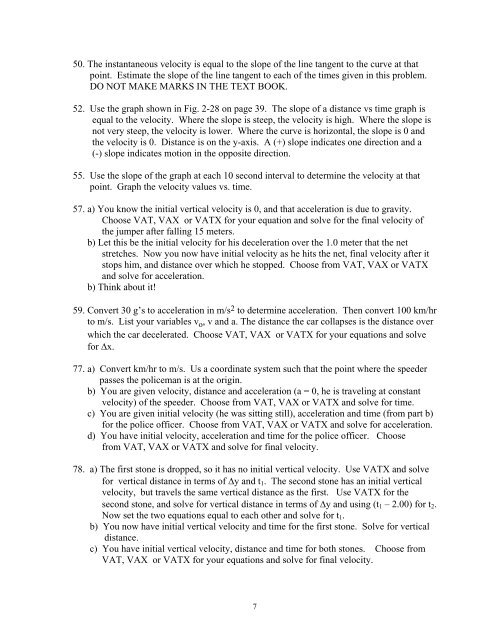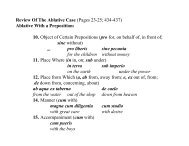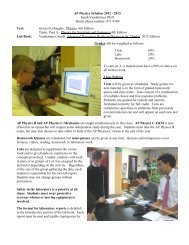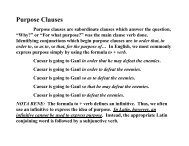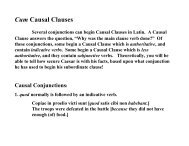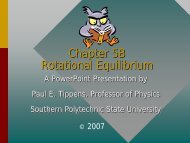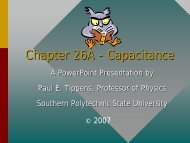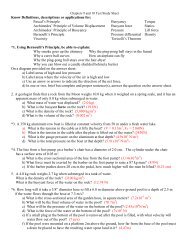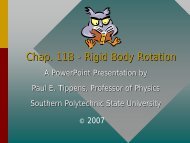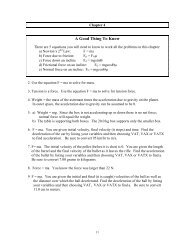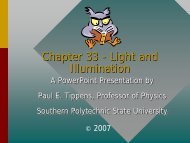Homework Hints Chapter 01-03.pdf
Homework Hints Chapter 01-03.pdf
Homework Hints Chapter 01-03.pdf
You also want an ePaper? Increase the reach of your titles
YUMPU automatically turns print PDFs into web optimized ePapers that Google loves.
50. The instantaneous velocity is equal to the slope of the line tangent to the curve at thatpoint. Estimate the slope of the line tangent to each of the times given in this problem.DO NOT MAKE MARKS IN THE TEXT BOOK.52. Use the graph shown in Fig. 2-28 on page 39. The slope of a distance vs time graph isequal to the velocity. Where the slope is steep, the velocity is high. Where the slope isnot very steep, the velocity is lower. Where the curve is horizontal, the slope is 0 andthe velocity is 0. Distance is on the y-axis. A (+) slope indicates one direction and a(-) slope indicates motion in the opposite direction.55. Use the slope of the graph at each 10 second interval to determine the velocity at thatpoint. Graph the velocity values vs. time.57. a) You know the initial vertical velocity is 0, and that acceleration is due to gravity.Choose VAT, VAX or VATX for your equation and solve for the final velocity ofthe jumper after falling 15 meters.b) Let this be the initial velocity for his deceleration over the 1.0 meter that the netstretches. Now you now have initial velocity as he hits the net, final velocity after itstops him, and distance over which he stopped. Choose from VAT, VAX or VATXand solve for acceleration.b) Think about it!59. Convert 30 g’s to acceleration in m/s 2 to determine acceleration. Then convert 100 km/hrto m/s. List your variables v o , v and a. The distance the car collapses is the distance overwhich the car decelerated. Choose VAT, VAX or VATX for your equations and solvefor Δx.77. a) Convert km/hr to m/s. Us a coordinate system such that the point where the speederpasses the policeman is at the origin.b) You are given velocity, distance and acceleration (a = 0, he is traveling at constantvelocity) of the speeder. Choose from VAT, VAX or VATX and solve for time.c) You are given initial velocity (he was sitting still), acceleration and time (from part b)for the police officer. Choose from VAT, VAX or VATX and solve for acceleration.d) You have initial velocity, acceleration and time for the police officer. Choosefrom VAT, VAX or VATX and solve for final velocity.78. a) The first stone is dropped, so it has no initial vertical velocity. Use VATX and solvefor vertical distance in terms of Δy and t 1 . The second stone has an initial verticalvelocity, but travels the same vertical distance as the first. Use VATX for thesecond stone, and solve for vertical distance in terms of Δy and using (t 1 – 2.00) for t 2 .Now set the two equations equal to each other and solve for t 1 .b) You now have initial vertical velocity and time for the first stone. Solve for verticaldistance.c) You have initial vertical velocity, distance and time for both stones. Choose fromVAT, VAX or VATX for your equations and solve for final velocity.7


